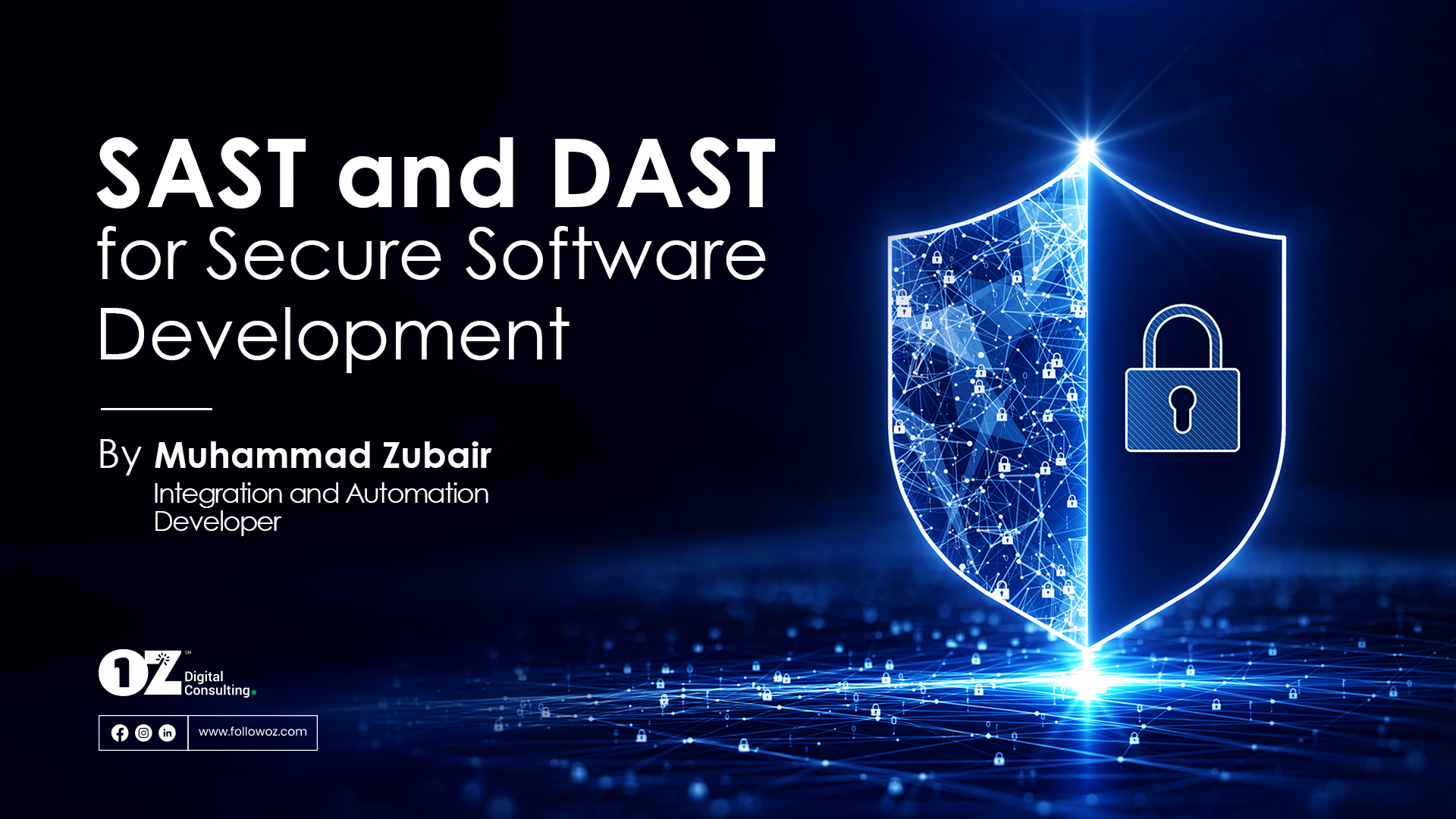By Muhammad Zubair, Integration and Automation Developer
Security is a top priority for any software development process. Software vulnerabilities can be exploited to steal data, corrupt systems, and cause other serious consequences.
So how can you ensure that your software is secure?
In the following primer, we will explore two primary types of security testing: Static Application Security Testing (SAST) and Dynamic Application Security Testing (DAST).
Static Application Security Testing (SAST):
SAST is a form of security testing that is performed on the source code of the application without executing it.
The primary objective of SAST is to detect security vulnerabilities in the code that can be exploited by attackers. SAST tools scan the source code of the application and analyze it for known security flaws, such as buffer overflows, SQL injection, and cross-site scripting (XSS).
One of the significant benefits of SAST is that it can detect vulnerabilities early in the development process, making it easier and cheaper to fix them. SAST provides a comprehensive analysis of the application’s source code, including third-party libraries. Moreover, SAST tools can be easily integrated into the development process, making it simpler to perform security testing.
On the other hand, SAST tools may generate false positives or miss some vulnerabilities, and it does not test the application’s behavior in a real-world environment. Additionally, SAST tools require access to the source code, which may not be available in some cases, particularly when the application is proprietary software.
Dynamic Application Security Testing (DAST):
DAST is a form of security testing that is performed on the running application.
DAST tools simulate attacks on the application to detect vulnerabilities. Unlike SAST, DAST tools test the application’s behavior in a real-world environment.
One of the significant advantages of DAST is that it can detect vulnerabilities that SAST tools may miss. Additionally, DAST tests the application in a real-world environment, which provides a more accurate assessment of its security. Moreover, DAST can be used to test applications that have already been deployed.
That said, DAST testing can be time-consuming and expensive, and it may cause disruptions to the application being tested.
Which Option is Best for You?
Both SAST and DAST are essential components of a comprehensive security testing strategy.
However, there are significant differences: SAST is a form of white-box testing that focuses on the source code, while DAST is a form of black-box testing that focuses on the application’s behavior. SAST is performed early in the development process, while DAST is performed on a deployed application.
Further…
- SAST can detect vulnerabilities before the code is compiled or deployed, while DAST can detect vulnerabilities that are introduced after the code is deployed.
- SAST is automated and can be integrated into the development process, while DAST requires more manual effort and may cause disruptions to the application being tested.
- SAST can detect vulnerabilities in third-party libraries, while DAST may miss them.
Your Next Steps
Software engineers at OZ know their way around back-end languages (Java, .NET, and Ruby), front-end languages (JavaScript, CSS, and HTML), and database management systems (Microsoft SQL, MySQL)—and have a track record of delivering innovative solutions for complex projects.
To learn more about our development services click here or schedule a consultation today.



